Photographer Leandro Farina casts a rare, cinematic light on Balfron Tower
We sit down (from afar) with the London-based photographer to get his take on the past life of a Brutalist icon on the cusp of transformation
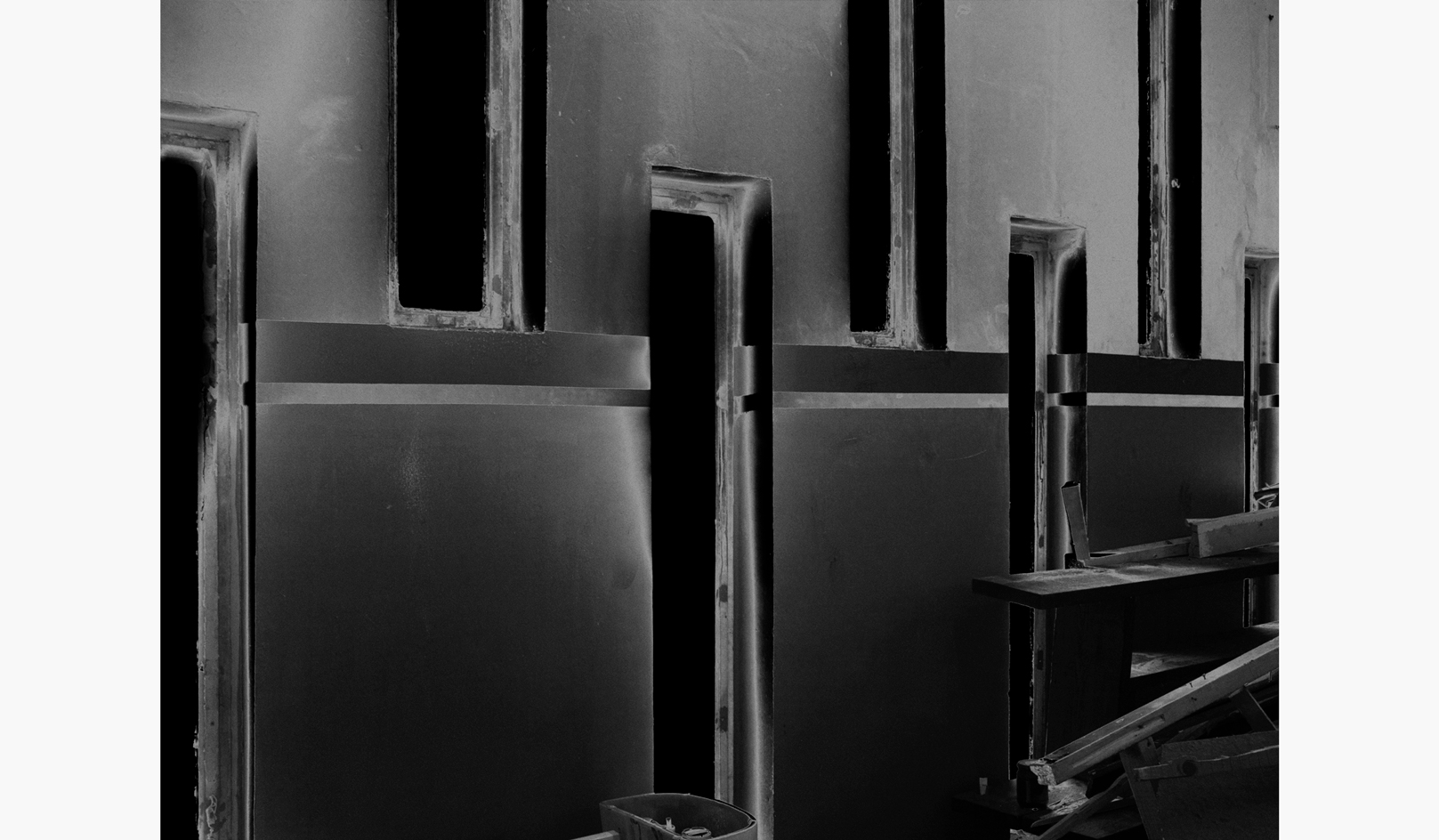
Leandro Farina - Photography
Long-time Wallpaper* contributor, Leandro Farina’s striking experiments with light and photographic techniques have seen him carve out a distinctive reputation in still life photography, with collaborations with the likes of Louis Vuitton and Tom Ford under his belt. Here, for a personal project, he throws the spotlight on something a little different: Ernö Goldfinger’s vertical vision for London, cemented in the brutalist architecture of Balfron Tower. Farina gained access at a rare moment, in the early stages of a regeneration project that has stirred a debate on gentrification. This poignant visual narration, titled Balfron, Brownfield, Estate, uses an arresting light inversion technique, which, as he explains, felt like an appropriate application for Balfron Tower’s ‘second life’.
Wallpaper*: When and how did the idea for the project Balfron, Brownfield, Estate come about?
Leandro Farina: In 2017 and 2018. I had shot an interiors project for the developer and asked if I could get access for my own project. I don’t live too far from the estate – which made it easier to return frequently – and I always regarded it when I walked past.
After my visit, I was struck by how building projects take place. This kind of transformation happens in relative seclusion: a curtain goes up at the beginning and when it’s finished, is taken away again, so you don’t really get to see the process. I liked the idea of taking pictures in a place and creating an archive of it periodically. This meant that every time I returned, lots had changed; I could never take the same picture in the same place twice – a new version of the scene would emerge.
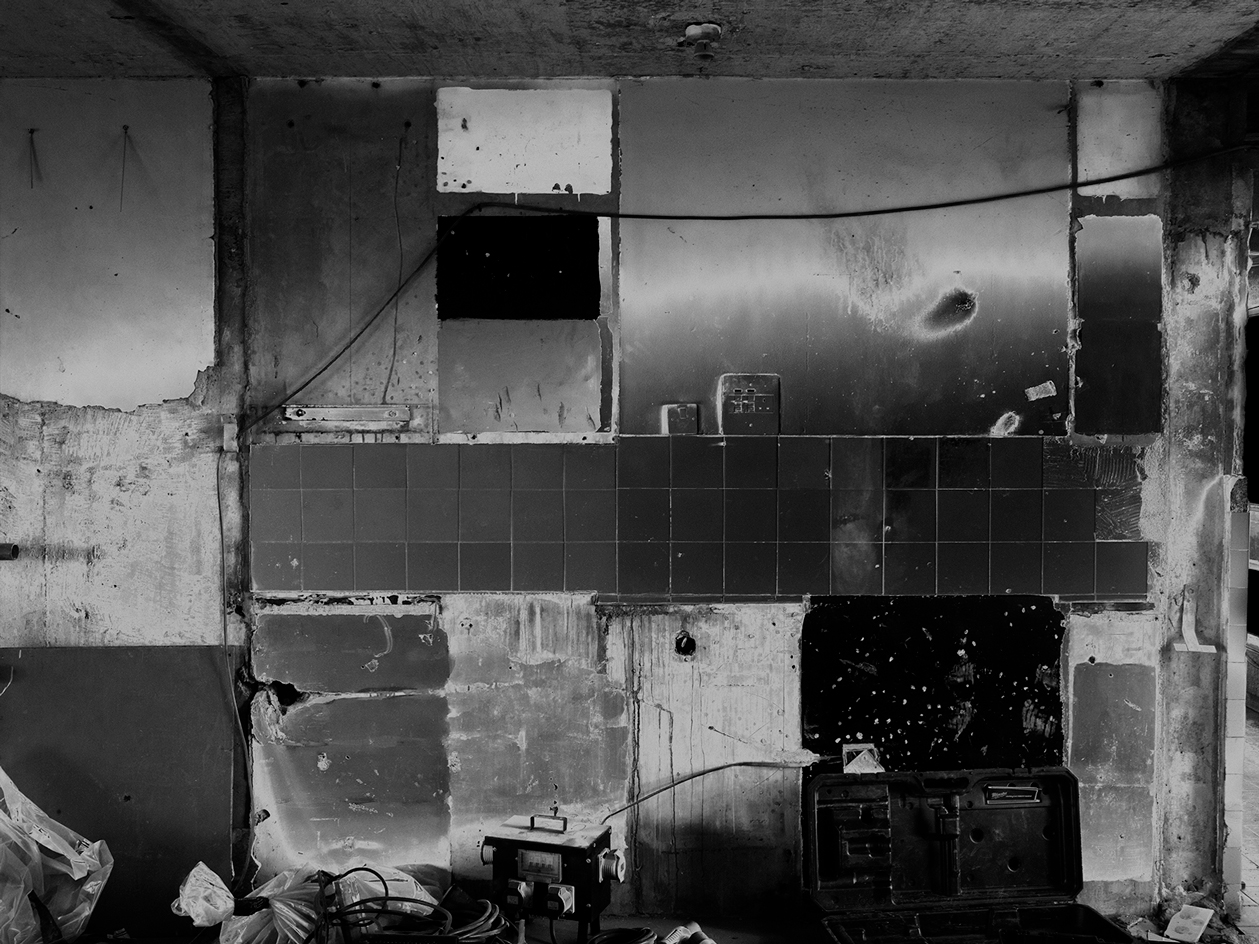
Layered tiles in a Balfron Tower kitchen
W*: What do you find so intriguing about the architecture and story of Balfron Tower?
LF: I think of Goldfinger and Balfron as interesting London characters and I love how the building has been used in the past. Balfron has been the backdrop to quite a few films and books and I had read J.G. Ballard’s High-Rise in my 20s. Somehow that always sticks in the mind when walking around London especially when it’s grey. But I think my interest in the project was more opportunistic. I stumbled into it and how it looked affected me somehow, so I started to think, ‘why?’.
I think that Brutalism, in general, frightened me as a child growing up in London. To me, the austere and functional design and the incongruousness of the monolithic concrete towers rising from behind rows of two-storey Victorian houses were fascinating and repellent in equal measure.
I’ve always been attracted to interiors because I like to think about the people who lived in those places previously and try to understand the story of a place at a certain time. As the tower stood completely empty in a state of deconstruction, it let me look at these layers of habitation in linear stages going backwards. I saw it as a portal to a kind of different time in an otherworldly landscape.
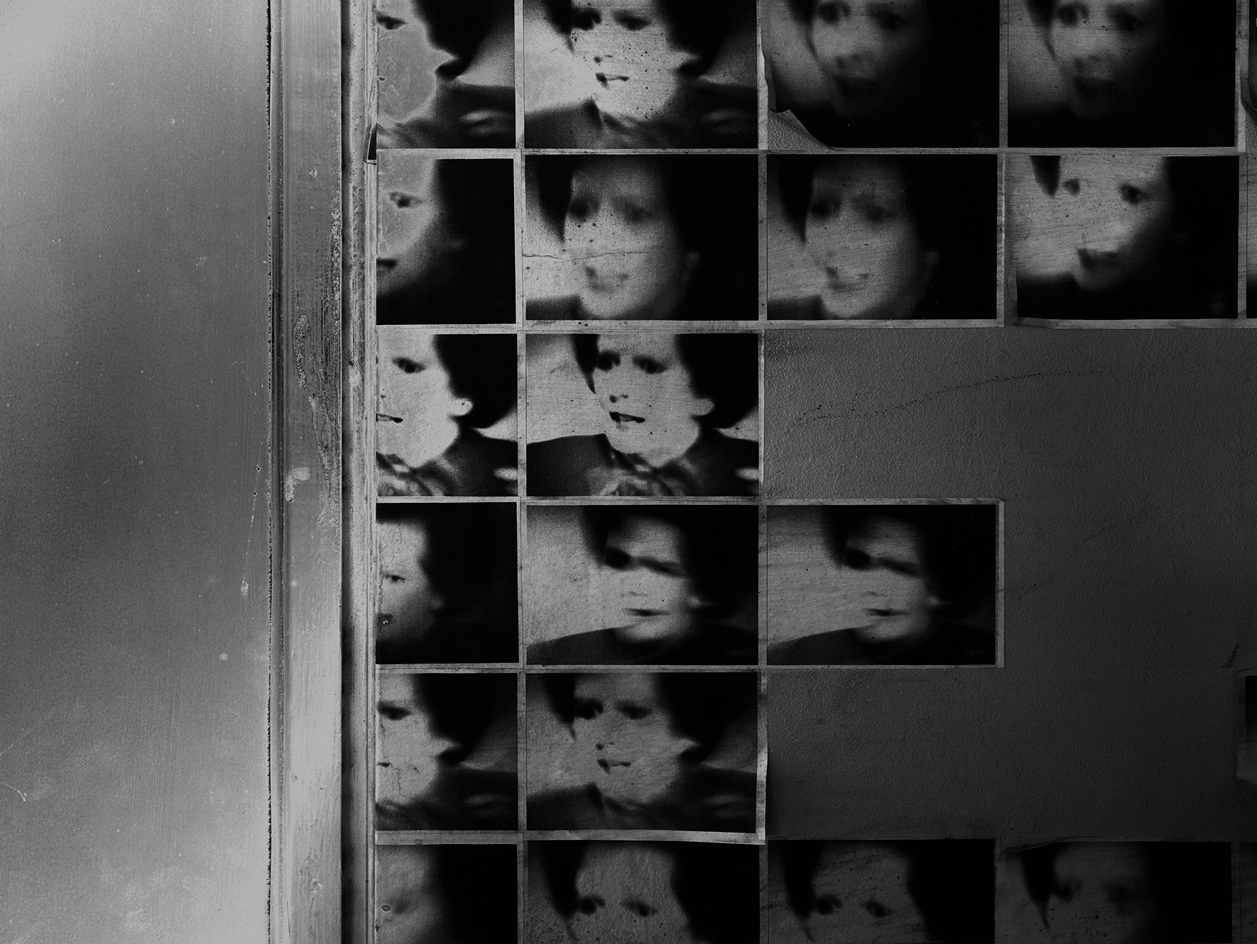
Close-up of a wall covering of Margaret Thatcher in a living room
W*: Can you talk a little about your photographic approach to this?
LF: I usually work with tabletop-sized things, but also work on larger projects for Wallpaper*, photographing (set build) interiors, I always try to think about these projects from the point of view of the people who might use them and create the spaces with that in mind. I love architecture, but don’t take pictures of it professionally so I just approached it in the same way I work in the studio. I had an idea of what the pictures should look like and I went looking for them in the building.
Wallpaper* Newsletter
Receive our daily digest of inspiration, escapism and design stories from around the world direct to your inbox.
Once I had all the pictures I could take, I sat on it for a quite a while and wondered if I could do more than just create a record and perhaps make the image-making process more integral to the subject matter. I experimented with various processes but kept coming back to a kind of solarisation process; inverting the light seemed to feel somehow appropriate to the building’s second life.
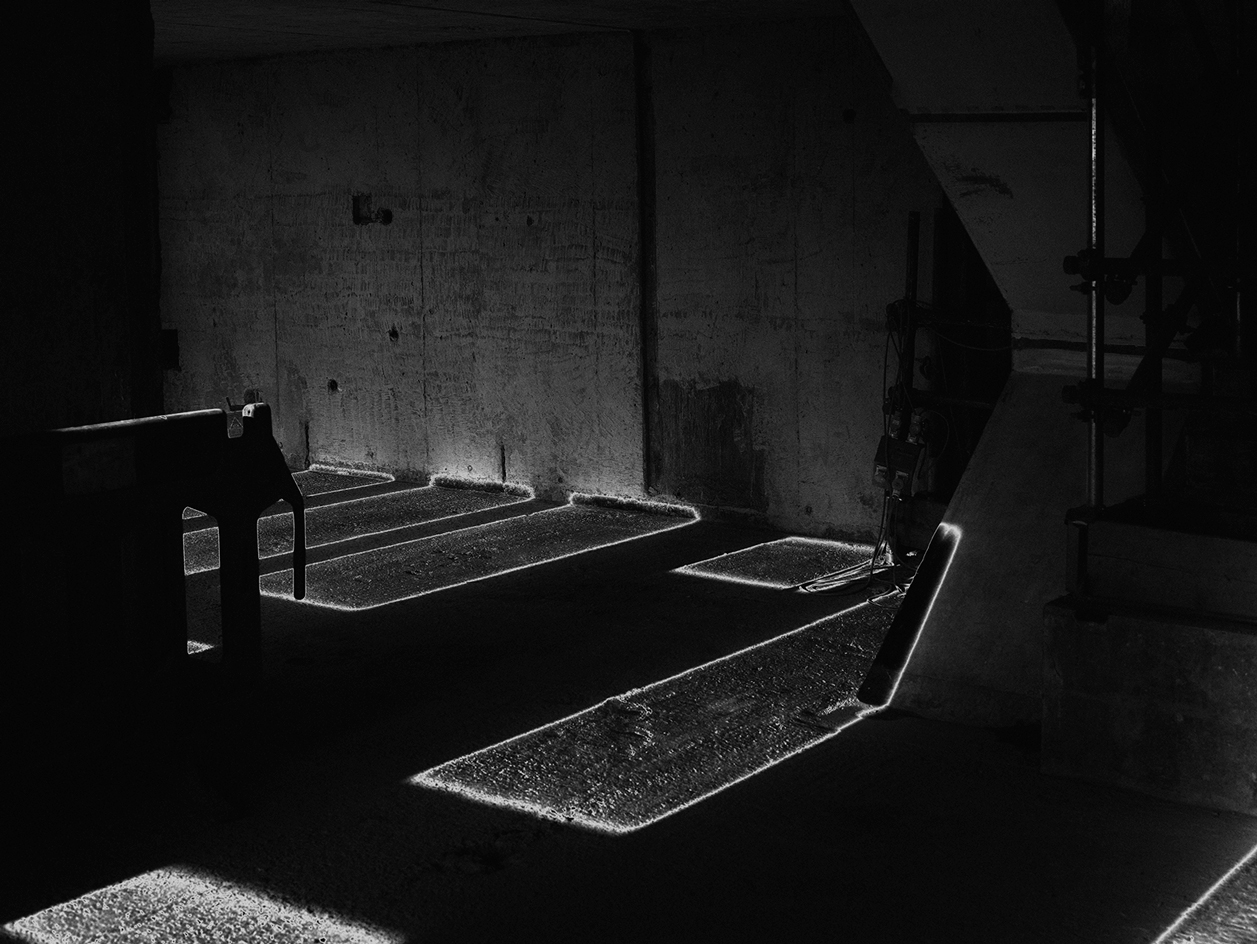
A living room stripped back to the concrete shell
W*: What were some of the most interesting objects or elements of the building that you came across?
LF: I tried to look for anything personal that was left behind or that might indicate the passing of time. The Margaret Thatcher room was an interesting surprise. The entire room was covered in postcard-sized images of Margaret Thatcher's face in an animated sequence, like film slides laid out next to each other. I have no idea why, but the mystery is compelling. Balfron has 146 flats; many of the floors in the building were already stripped so I could see all stages in the process. A couple of the floors still had elements of previous tenants’ interiors, wallpaper or modifications to the interiors – I tried to look for as many of these as possible.
W*: Do you have any plans to publish the series?
LF: I’m planning to publish it as a book, hopefully towards the end of the year.
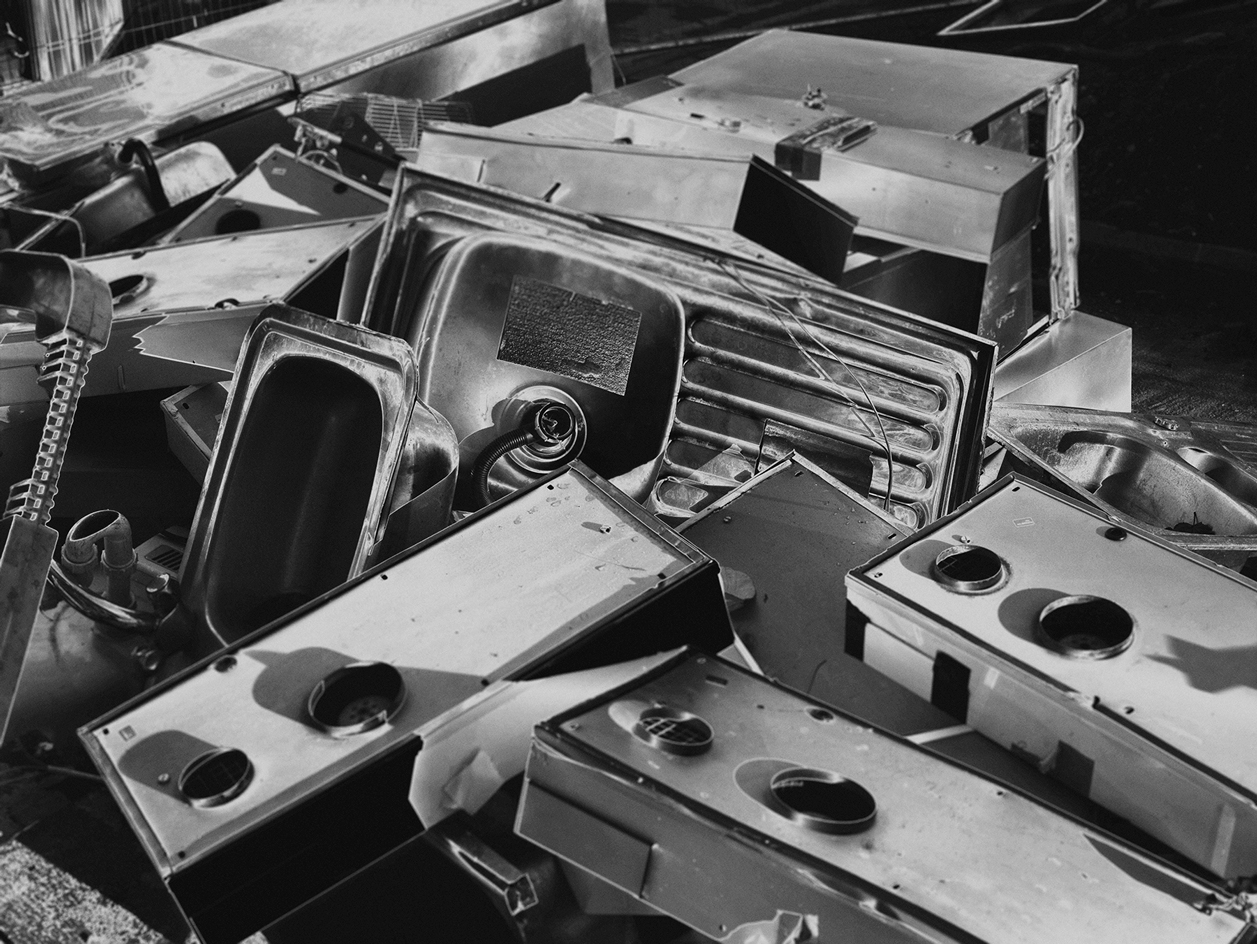
A collection of discarded kitchen appliances
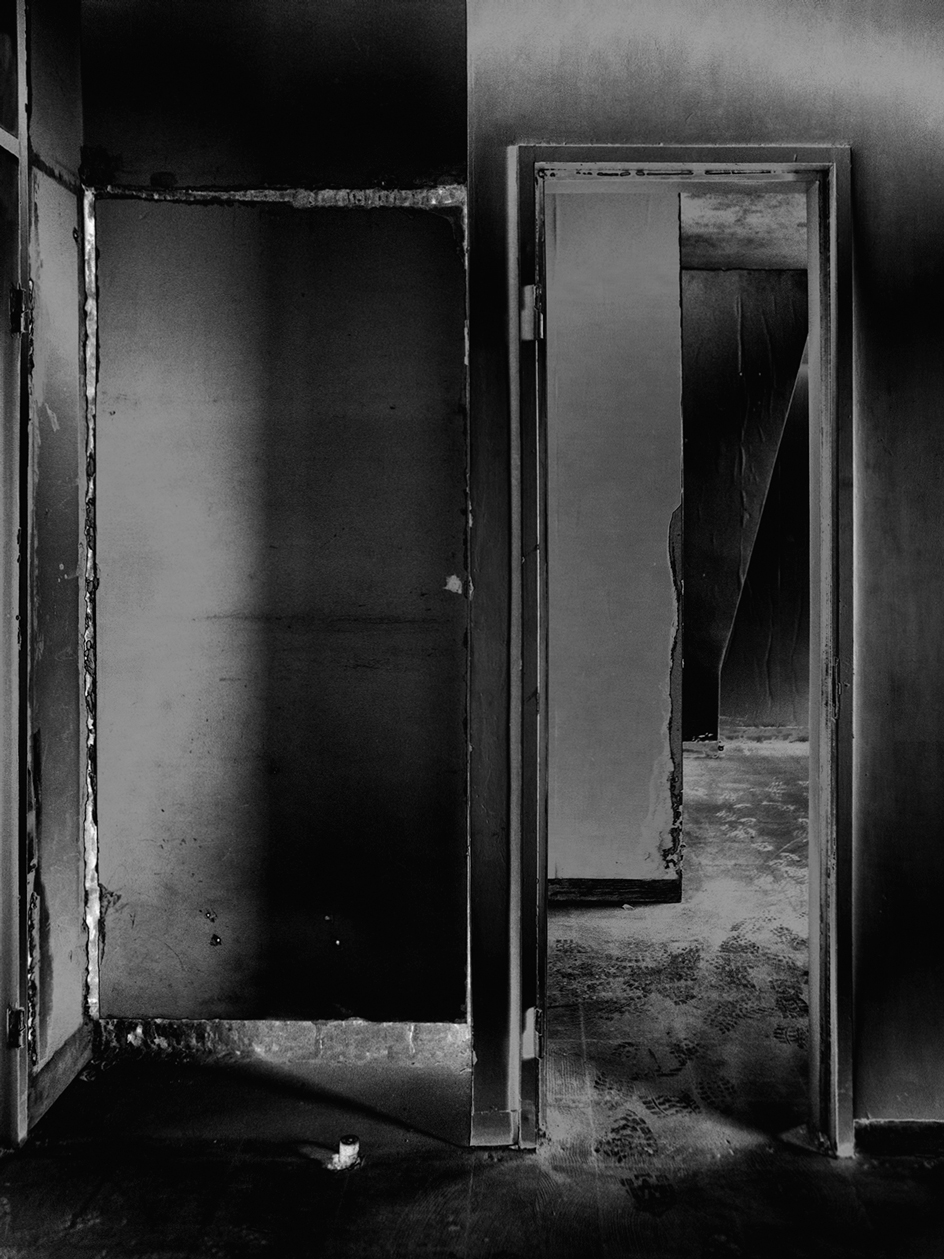
View from the landing in a maisonette in the process of being stripped back
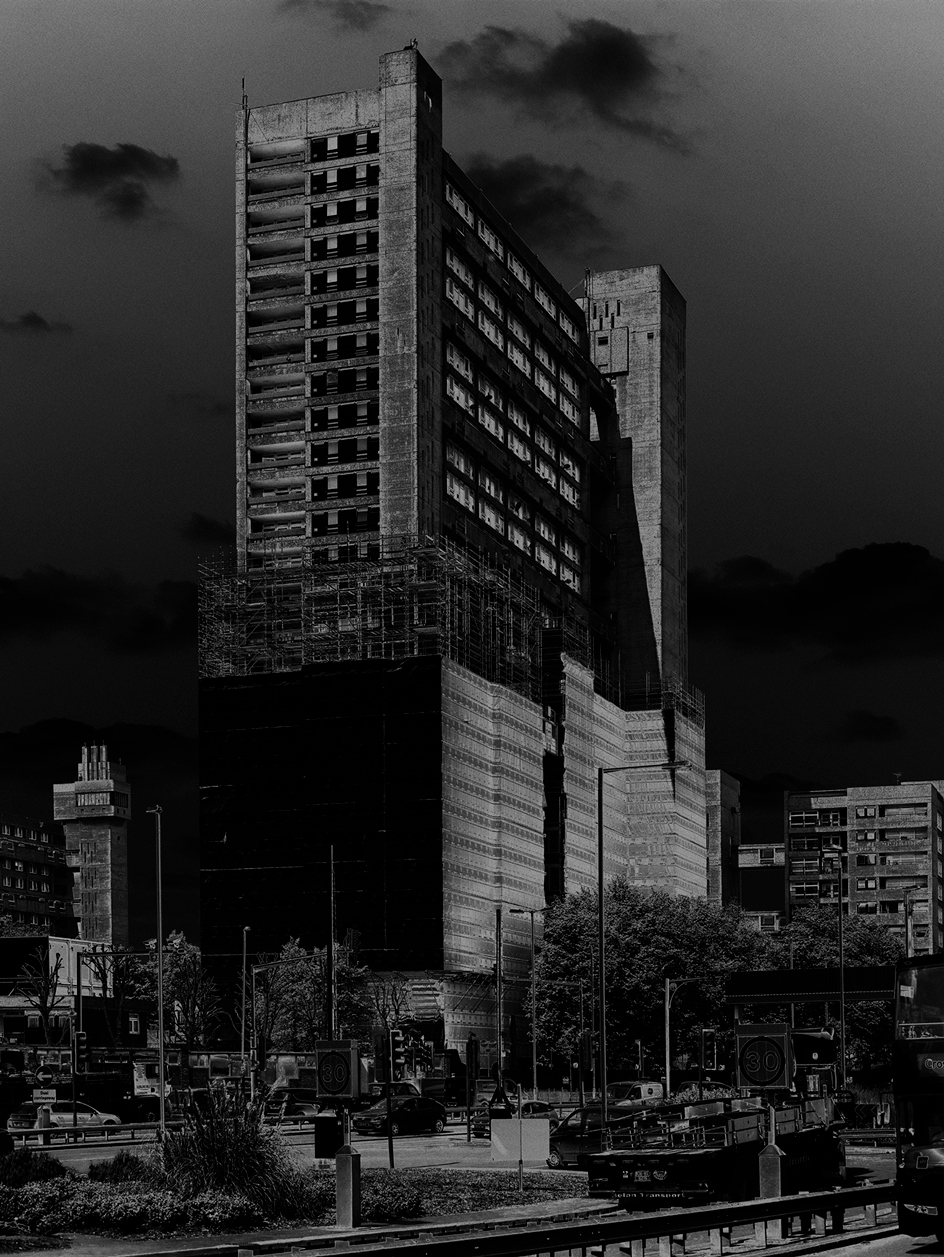
View of the south side of the tower from the A12
INFORMATION
Harriet Lloyd-Smith was the Arts Editor of Wallpaper*, responsible for the art pages across digital and print, including profiles, exhibition reviews, and contemporary art collaborations. She started at Wallpaper* in 2017 and has written for leading contemporary art publications, auction houses and arts charities, and lectured on review writing and art journalism. When she’s not writing about art, she’s making her own.
-
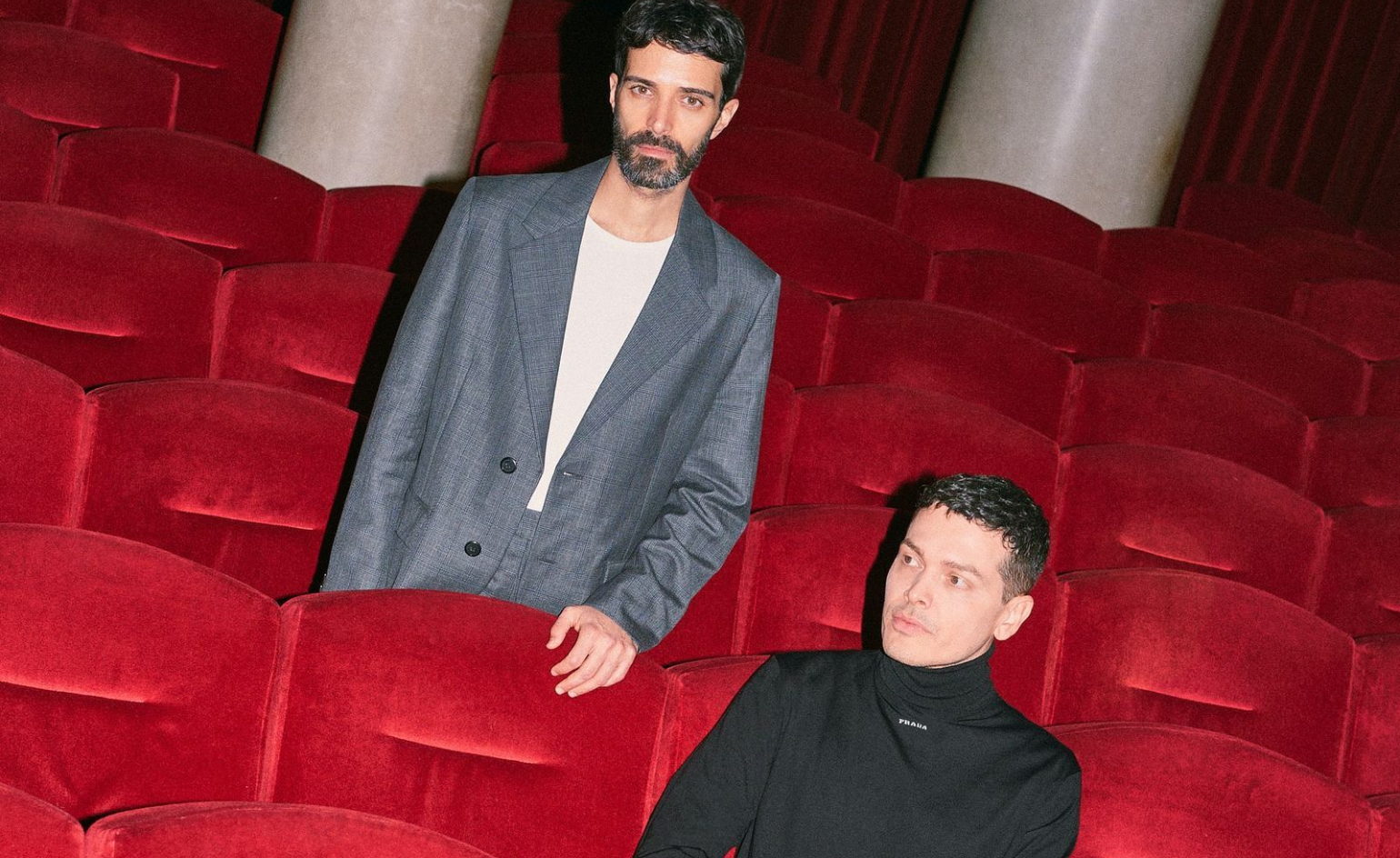 Everything you need to know about Italy's Lake Maggiore, according to Formafantasma
Everything you need to know about Italy's Lake Maggiore, according to FormafantasmaFrom baroque gardens to panoramic views, Andrea Trimarchi and Simone Farresin show us around this Italian escape
By Sofia de la Cruz Published
-
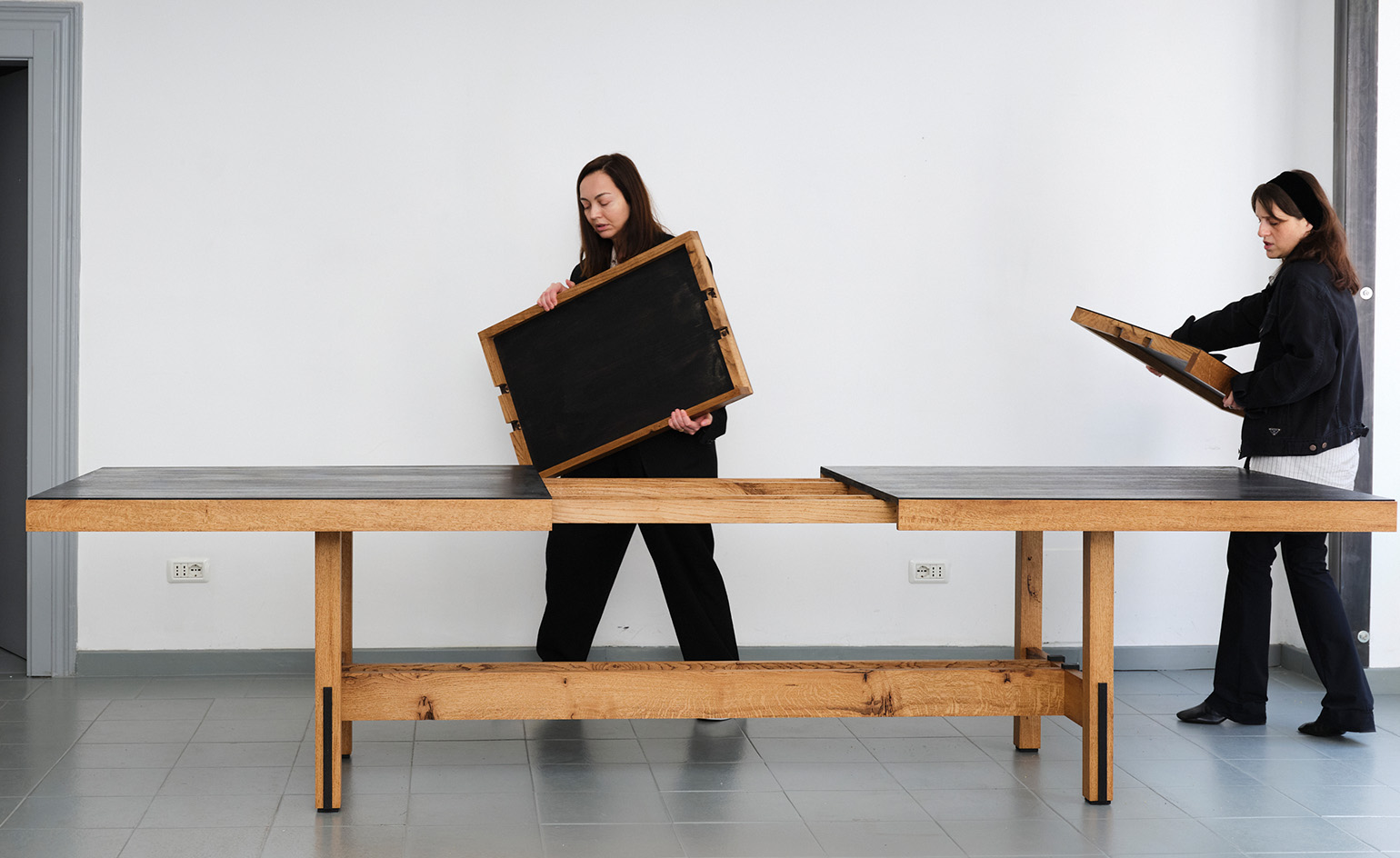 In Milan, Rooms Studio examines Georgia’s shifting social landscape
In Milan, Rooms Studio examines Georgia’s shifting social landscapeExpandable tables that reference recent government protests and lamps held together with ‘chewing gum’ feature in the Tbilisi-based studio’s Milan Design Week 2025 installation
By Dan Howarth Published
-
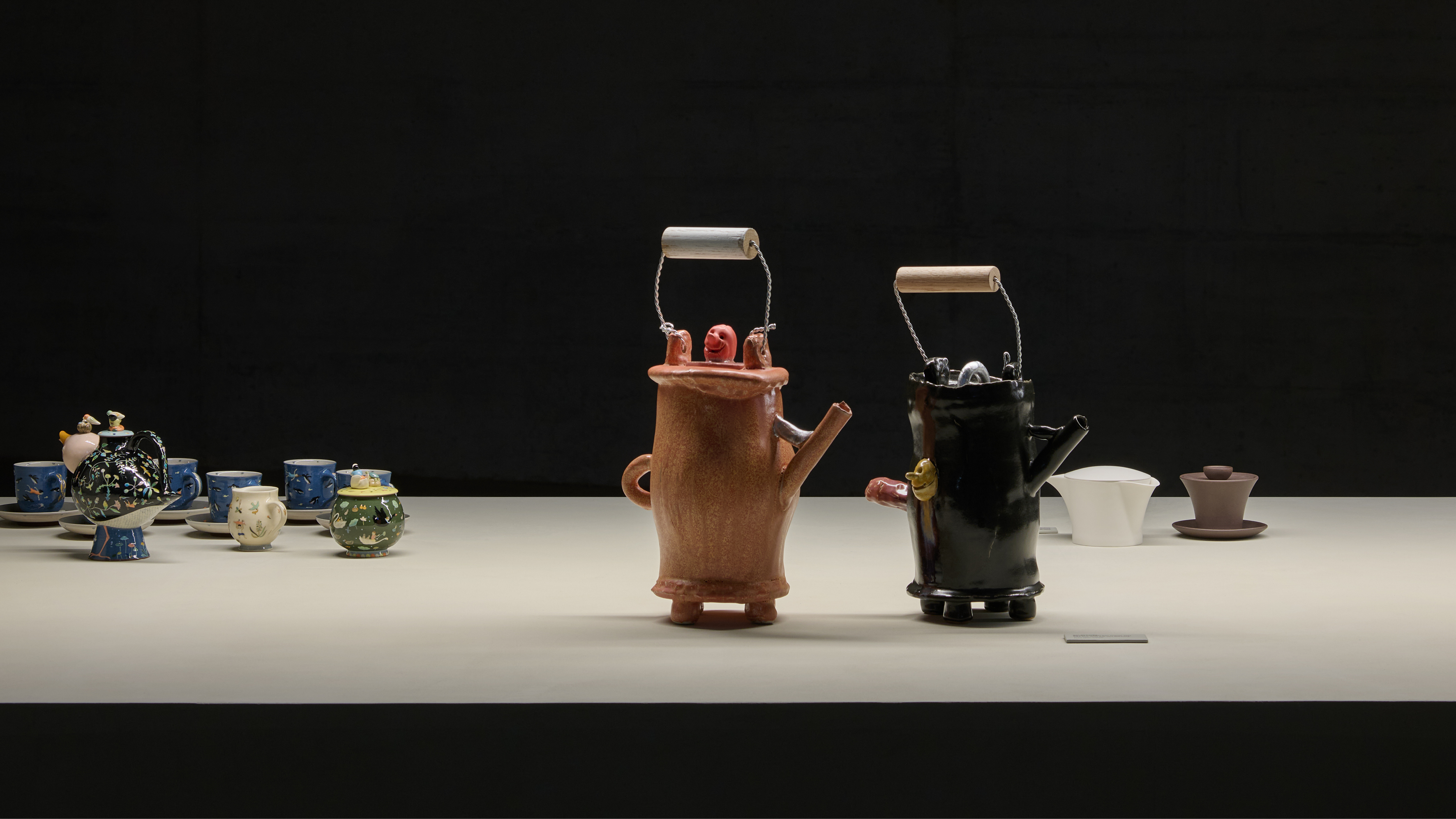 The best fashion moments at Milan Design Week 2025
The best fashion moments at Milan Design Week 2025In this ongoing report, Scarlett Conlon discovers the finest fashion moments at Salone del Mobile and Milan Design Week 2025, from Loewe’s artist-designed teapots to Saint Laurent’s celebration of Charlotte Perriand
By Scarlett Conlon Published
-
 From counter-culture to Northern Soul, these photos chart an intimate history of working-class Britain
From counter-culture to Northern Soul, these photos chart an intimate history of working-class Britain‘After the End of History: British Working Class Photography 1989 – 2024’ is at Edinburgh gallery Stills
By Tianna Williams Published
-
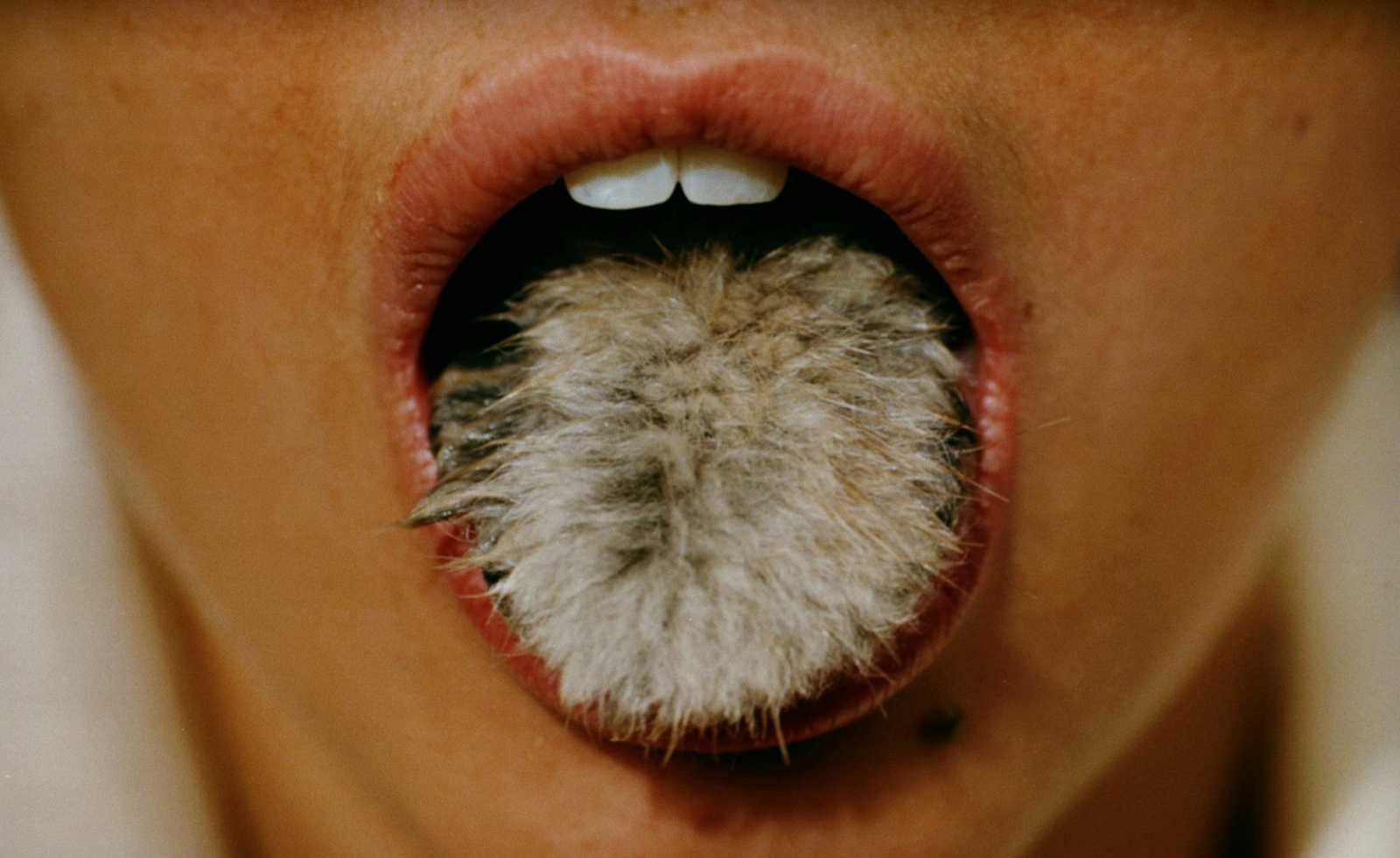 Surrealism as feminist resistance: artists against fascism in Leeds
Surrealism as feminist resistance: artists against fascism in Leeds‘The Traumatic Surreal’ at the Henry Moore Institute, unpacks the generational trauma left by Nazism for postwar women
By Katie Tobin Published
-
 From activism and capitalism to club culture and subculture, a new exhibition offers a snapshot of 1980s Britain
From activism and capitalism to club culture and subculture, a new exhibition offers a snapshot of 1980s BritainThe turbulence of a colourful decade, as seen through the lens of a diverse community of photographers, collectives and publications, is on show at Tate Britain until May 2025
By Anne Soward Published
-
 Brutalism in film: the beautiful house that forms the backdrop to The Room Next Door
Brutalism in film: the beautiful house that forms the backdrop to The Room Next DoorThe Room Next Door's production designer discusses mood-boarding and scene-setting for a moving film about friendship, fragility and the final curtain
By Anne Soward Published
-
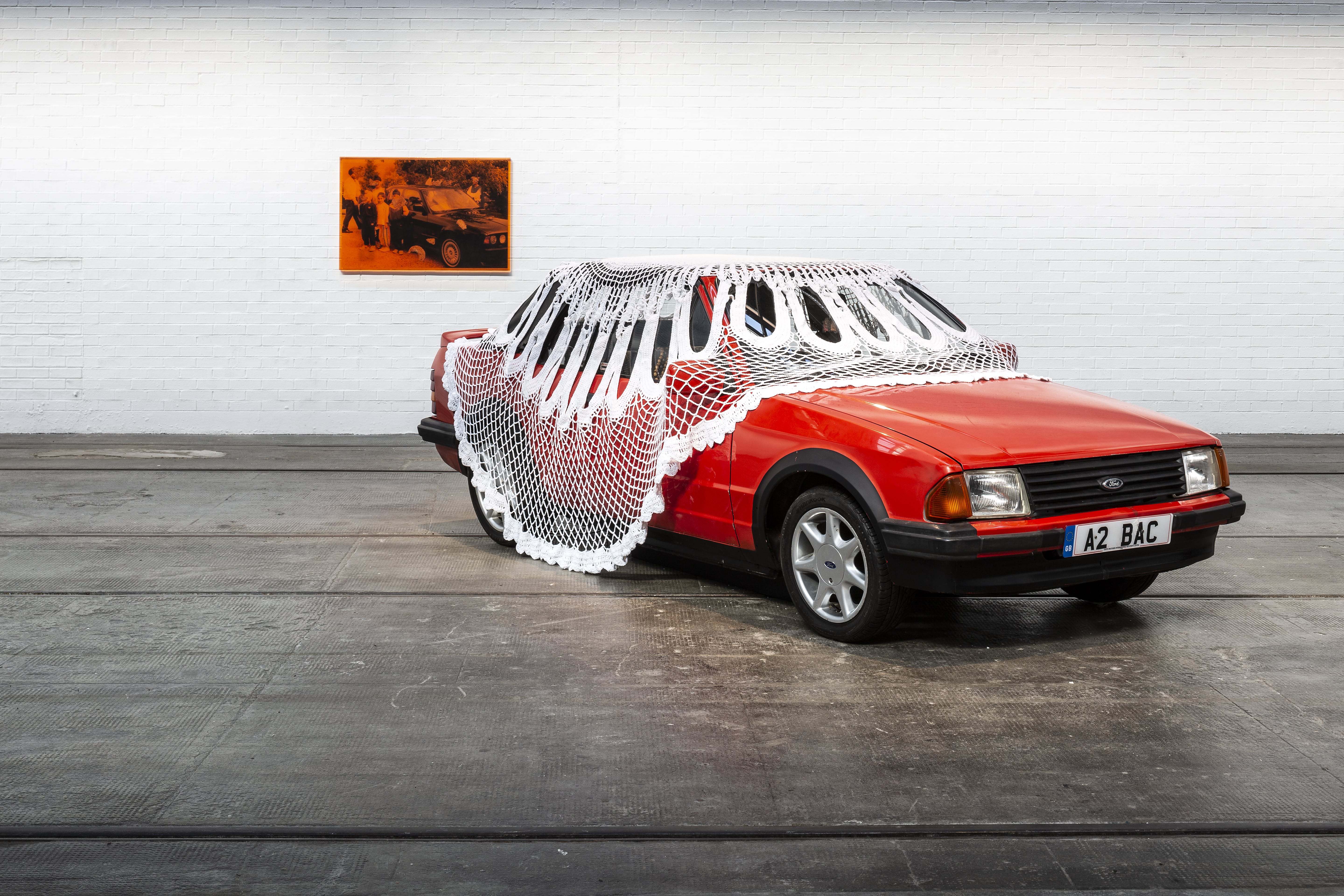 Jasleen Kaur wins the Turner Prize 2024
Jasleen Kaur wins the Turner Prize 2024Jasleen Kaur has won the Turner Prize 2024, recognised for her work which reflects upon everyday objects
By Hannah Silver Last updated
-
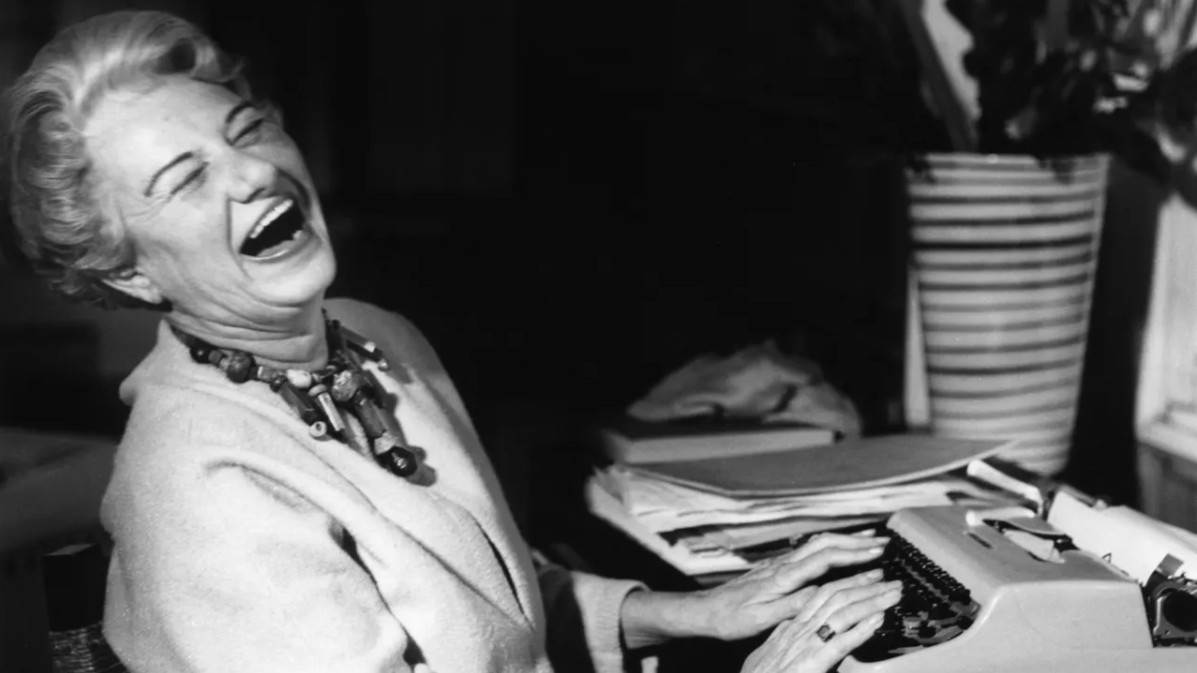 Peggy Guggenheim: ‘My motto was “Buy a picture a day” and I lived up to it’
Peggy Guggenheim: ‘My motto was “Buy a picture a day” and I lived up to it’Five years spent at her Sussex country retreat inspired Peggy Guggenheim to reframe her future, kickstarting one of the most thrilling modern-art collections in history
By Caragh McKay Published
-
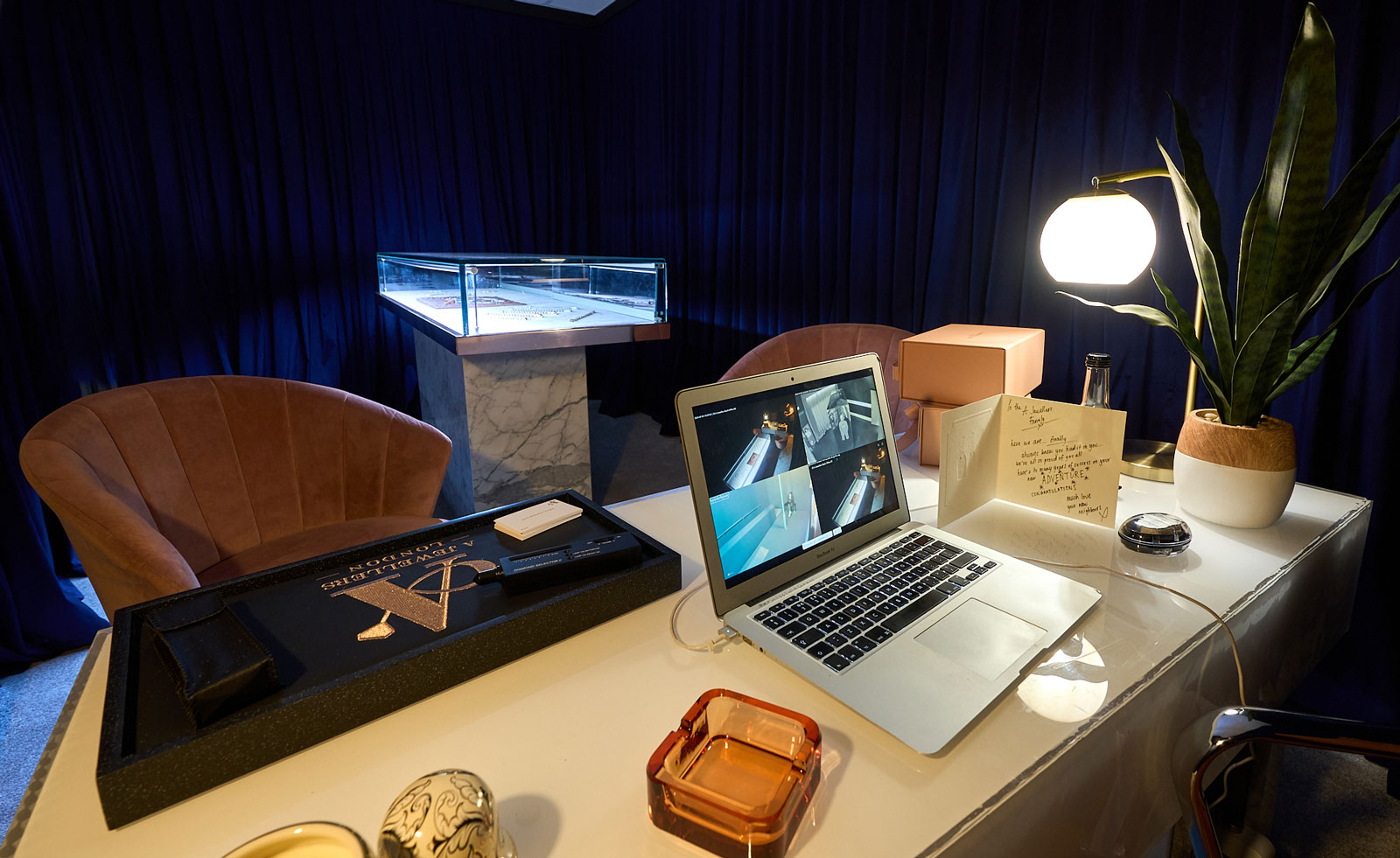 Please do touch the art: enter R.I.P. Germain’s underground world in Liverpool
Please do touch the art: enter R.I.P. Germain’s underground world in LiverpoolR.I.P. Germain’s ‘After GOD, Dudus Comes Next!’ is an immersive installation at FACT Liverpool
By Will Jennings Published
-
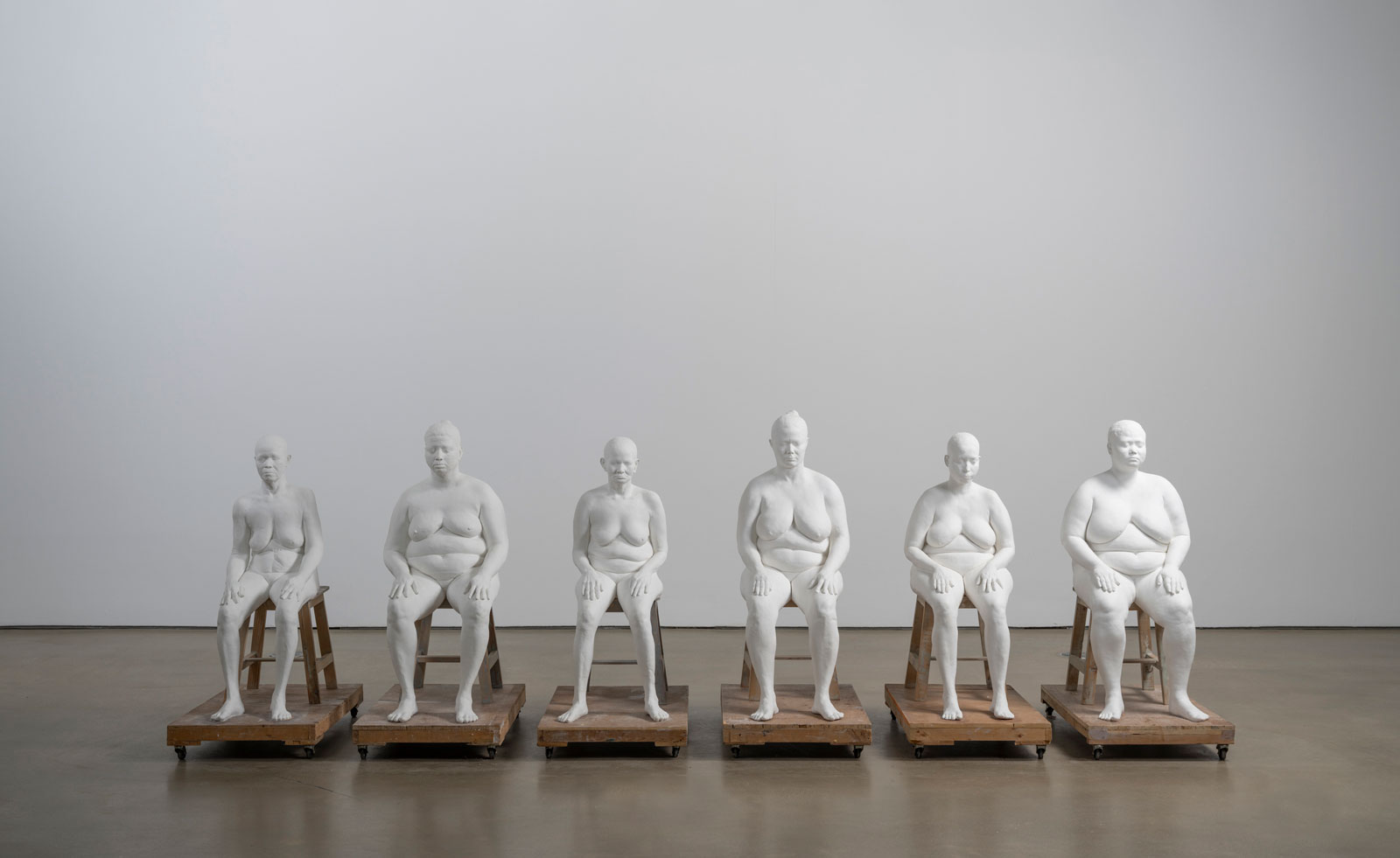 ‘Regeneration and repair is a really important part of how I work’: Bharti Kher at Yorkshire Sculpture Park
‘Regeneration and repair is a really important part of how I work’: Bharti Kher at Yorkshire Sculpture ParkBharti Kher unveils the largest UK museum exhibition of her career at Yorkshire Sculpture Park
By Will Jennings Published